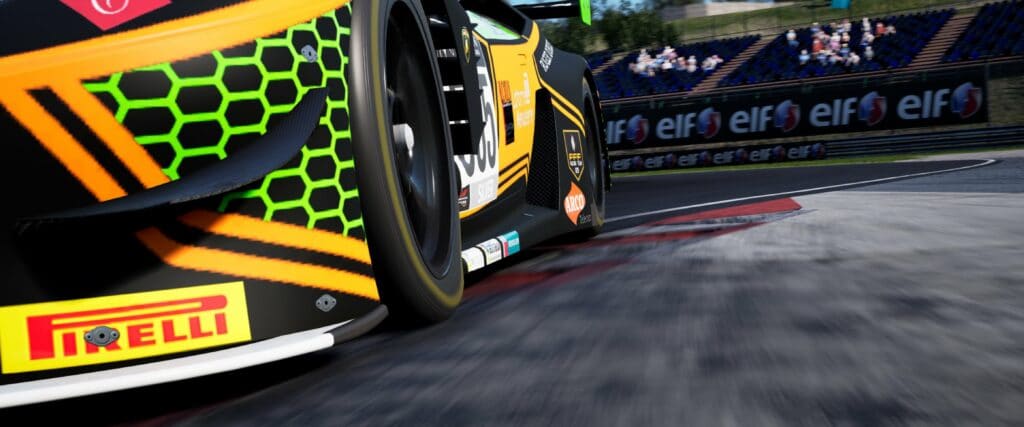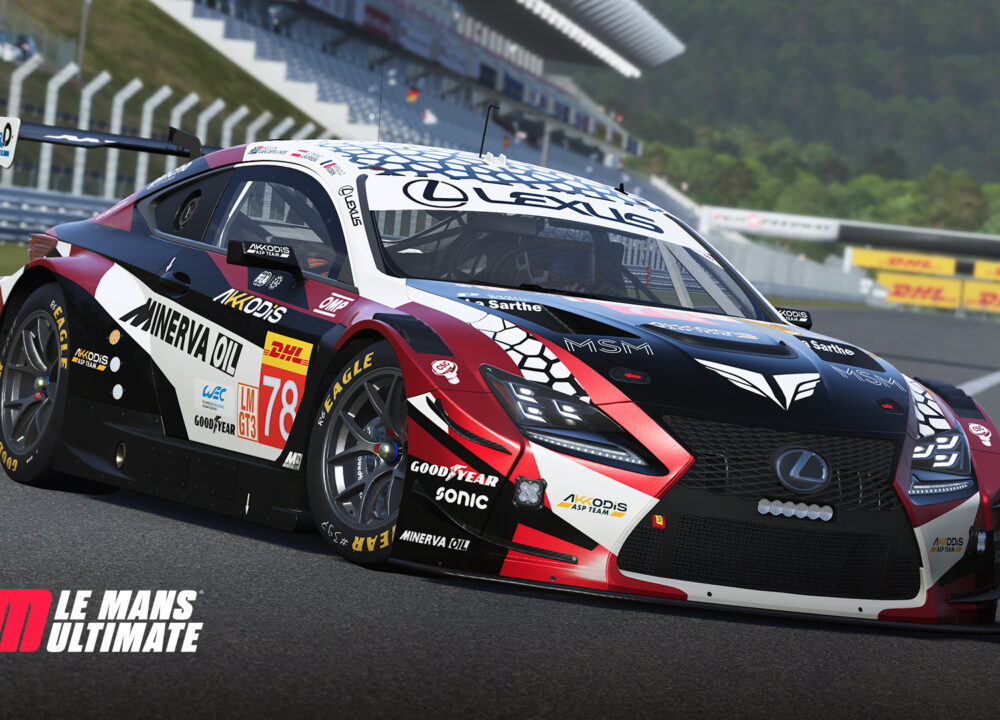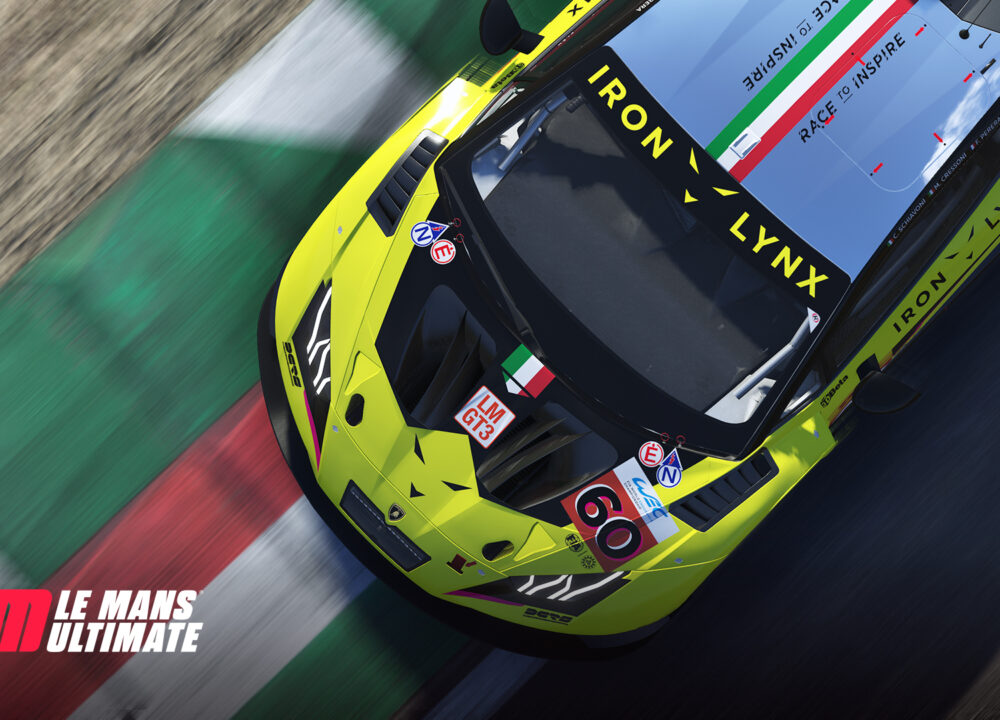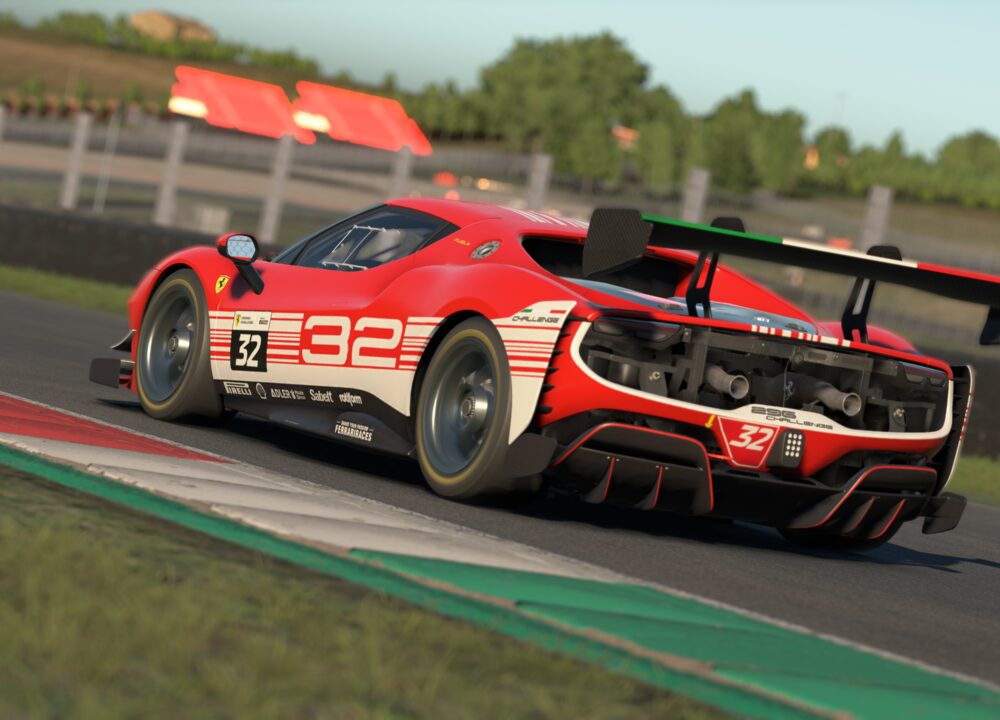Every time you head out of the pits, chances are you’d feel your tires first. A common question that faces every driver is “Are these tires correct enough to be driveable?”, and that simple question is ever so crucial for racing. So what is the fuss about tire pressures in ACC and is there a “right pressure window” for each car? Short answer, yes. Long answer, read on!
Importance of Correct Tire Pressures
Back to our driving example, we know that an overinflated tire has the tendency to; burst, leak some air out and feel super hard in terms of ride comfort. Similarly, an underinflated tire will feel more bouncy and soft but increase tire wear significantly and increase fuel consumption. The same translates to racing. So much so, that even a single PSI of pressure above or below the optimum number can cost you 5-6 tenths of a second in lap times.
Regarding ACC, the most critical factors that contribute to optimum tire pressures include weather, track temperatures, air temperatures, brake temperatures, type of session and the car itself. There are many more nuances, some smaller than others, but they nonetheless contribute to the overall picture.
If you manage to get the right pressures for your tires during an event/session, you will be able to maximise your car’s performance and make your life much easier. If you thought incorrect steering setups cause unruly cars, inaccurate tire pressures are equally stubborn.
Delta Now Deals With Pressures
Coach Dave Academy has one solution for you. Coach Dave Delta, our companion app not only auto-installs your setups for you but automatically adjusts the pressures in the tires for you when you join a session.
Delta is so smart that it knows when you are in a new session and will adjust the temperatures accordingly. So you can at least sit in comfort knowing that when you are starting a practice session, qualifying session or race session, you have the right pressures ready to go.
However, you will still need to adjust the pressures in your MFD manually if your race session has a pit-stop requirement, as fluctuations in temperatures during an active session cannot be recognised.
Identifying Tire Pressure Factors in ACC
Whether you are an amateur or a professional sim driver, there are many cues displayed throughout ACC to help you understand your car as much as possible. Tire Pressure is also a very mappable reading in the game. First and foremost, it is essential to understand the units and measure air pressure in a tire.
Air pressure is measured in Pascal (the SI unit), PSI and bar, but we will stick to PSI as it’s the standard unit used for measuring tire pressures. Getting your PSI number for each tire correctly right down to the decimal values should be your ultimate goal.
Optimum Tire Pressure
In simple terms, the optimal pressure is the tire pressure you need to have when starting a hotlap (in qualifying), or the tire pressures you need to maintain after your formation lap in a race. Calculating optimal pressure values is easier during practice. Start with a baseline pressure value and complete a few laps (minimum 3). Note your tire pressure and compare it to the optimum windows (given below) based on the tire compounds. Try inflating your tires to a value that allows you to reach the optimal pressure in the given amount of time.
Understand How the Tyre Works
A tire offers variable grip, shock absorption, rolling resistance and tire wear depending on the tire pressure (and of course, tire compound). A higher PSI value results in a tire having less dampening, low wear, short-term grip and less rolling resistance.
The inverse is true for lower PSI values. Your suspension will have more bounce, but your tire life and grip reduce while tyre wear and rolling resistance increase.
Pay Attention to All Temps
This might sound a little generic but holds for all temperature readings. Track temps, tire temps, brake temps and the weather dictate how your tire pressure behaves. Colder temps reduce your tire pressure compared to the pressure you had in the pits while heat and hotter temps, in general, will increase the pressure inside the tires.
You always want to aim for a maximum temperature spread of 15 degrees celsius between the outer, middle and interior readings of the tire.
Use the HUD
The tire display widget in the HUD option displays your tire temps and pressure for each tire along with the brake temps. A green tire (around 80-90 degrees Celsius with a working range of 70-100 degrees Celsius) is a perfectly heated tire and the optimum tire pressure of 26-27.2 PSI should be achieved at this state. But displaying temps is just one feature of the HUD. It also shows you the shape of a tire.
If the middle band is curved inwards, it means your tire is under-inflated, and tire wear is more on the exterior. If the middle band is longer than the sidebands, it means your tire is overinflated, and tire wear is concentrated in the centre. Make sure your tires are green and that all bands are equal.
How to Adjust Tire Pressures and When
All cars have variable tire pressures, and it depends on driver preferences quite a bit. But ultimately, each car has its sweet spot where the PSI levels are just right for it to churn out maximum performance.
In technical terms, we call this the optimum pressure. Depending on the scenario, you’d be required to increase or lower the pressure. Automatic and Preset Setups are always available, but they don’t offer the maximum results. Hence, custom ACC setups are the way to go and you can find custom setups for each car over at Coach Dave Academy!
Dry Conditions
The most common session conditions will be dry and during the day. Generally speaking, the only factors that affect you here are track temps and air temperature. Higher temperatures will cause tyre pressures to increase rapidly. Hence, filling air lower than the optimum tire pressure is the way to go.
In lower temperatures, it will be more challenging to get the heat into the tires and have a slightly higher tire pressure than optimum is best practice.
Optimum Tire Pressure Windows
| Category | Compound | Pressures (in PSI) |
| GT3 | DHF | 26 to 27.2 |
| GT4 | DHF | 26 to 27.2 |
Wet Conditions
A lot of things change when the conditions turn to wet weather racing. Changing your car setup to wet is not the only thing required, and adjusting tire pressure is one of the tricks. Since we expect the track and the ambient temperatures to be lower than typical values, heating the tires will be a huge issue, not to mention water, flowing or standing which will rapidly cool the tires.
It is advised to inflate your tires slightly over the optimum range to ensure the high pressure is maintained even when the tires are cold.
Optimum Tire Pressure Windows
| Compound | Pressures (in PSI) |
| Wet DHE (2020) | 29.5 to 31.0 |
| Wet DHD2 (2019) | 29.5 to 31.0 |
Changing Conditions
Changeable weather is the biggest foe of any sim driver. It is difficult to predict the exact conditions for any given instant of your session. A lot of guesswork is required, which then takes practice and data to fine-tune your setup accurately.
A simple trick would be to predict the direction of the weather. If it is heading from dry to wet, expect temperatures to fall and hence, inflating your tires at a higher pressure will give you more grip and control as the weather changes.
Similarly, a drying track will cause your tires to heat up quickly, so staying on the lower end of the optimum range will help you. As these conditions cannot have a fixed optimum window, we can only say “practice makes perfect”. Try out a range of tire pressure setups in varying conditions for many different events using The Sim Grid’s Daily Racing option.
Time of Day
This one isn’t all that significant, mainly because most events have a fixed time slot. When it comes to endurance or dusk and dawn events, the time of the day can influence your tire pressures. Colder tracks need more tire pressure and vice versa.
As a general rule of thumb, for every 1 degrees Celsius of increase/decrease in ambient temperature, decrease your tire pressure by 0.1 PSI and vice versa.
Track temperatures, conversely, have an impact on your tire temperatures, particularly meaning you will then need to consider your car’s cooling (such as brake ducts) in order to keep tire pressures within the optimum window.
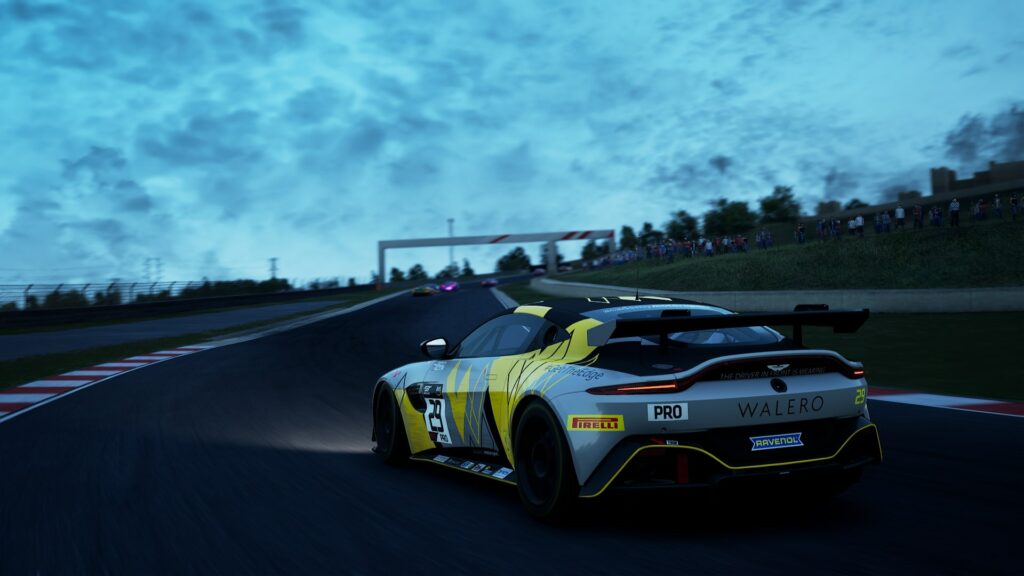
And that concludes our lecture on tire pressures! These four tyres may seem unimportant in how much air they hold, but the effect of even the slightest differences can cost you precious seconds over a stint. You can find more information on this and everything ACC on Coach Dave’s Academy. You can also sharpen your skills by heading over to The Sim Grid!
This article was written by Rudra Mehta, with editing from Grant Campbell
ACC Tyre Pressure FAQ:
ACC has a very unique tyre model, in that it works best within a specific pressure window for both dry and wet situations, unlike tyre models in iRacing where you just run them as low as possible without any consequences. If you are racing in the dry you want your PSI to be between 26.5 and 27.5. Anything below or over this window means your tyres are not operating at 100%. In the wet, you want the PSI to be 29.5 and 30.5 for the same reasons as in the dry.
You can manually adjust the pressures in ACC whilst you are in the pits, based on the temperature of the race track, but this requires a lot of messing around in different temps and saving the setups for specific situations. Alternatively, if you use Coach Dave Delta, it has an awesome built-in feature that automatically adjusts your pressures when joining any session based on the temperature of the server, meaning your pressures are always inside the optimal working window. If you are doing a pitstop, you will have to manually save a pit stop preset yourself with the correct tyre pressure.
Yes. This is a dynamic feature of ACC. The track surface and temperature on the server can fluctuate thanks to the weather systems in the game. The temperature you get when first joining the server can change based on the time of day and weather conditions, which in turn changes the tyre pressures you have in your tyres. Sometimes you have to gamble on running them a little higher or a little lower, so the PSI’s in the tyre level out over a race distance.
It is a dynamic feature of the game. No session is the same in ACC, meaning weather conditions, track temps, and air temps will fluctuate constantly. This will always affect the temps in the tyres, and it’s something long-time drivers of the sim have had to master. Many drivers will have multiple setups saved for a race session, with only tyre pressures changed, so they are ready whatever the weather, in each session of the event, be it practice, qualifying or the race.
100%. It is probably the number 1 contributor to lap times changing so much. If they are under-pressured or over-pressured, it affects the contact patch of the tyre to the road, which affects how and where the heat is dispersed in the tyre. Too cold and you don’t get enough grip, too hot and they overheat, resulting in the same situation. Tyres in ACC are the most sensitive thing that affects lap time.

